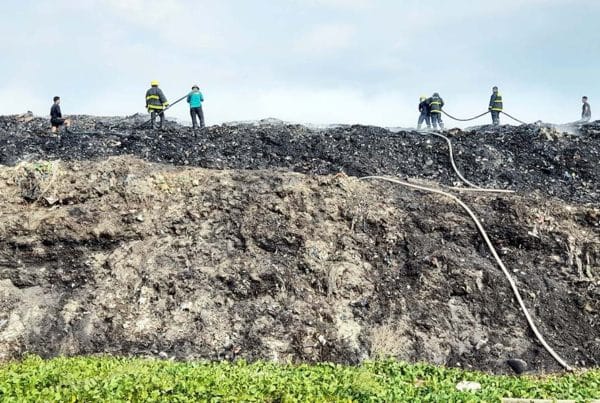Espino’s dream: A squatter-free Pangasinan
LINGAYEN—Dream the impossible dream?
This is what Gov. Amado Espino Jr., who is now on his third and final term, envisions for the province, specifically for some 5,700 informal settlers in the province, mostly in coastal areas, some on public land and others on private properties.
He aims to have the province’s informal settlers today resettled and deal with the so-called “professional squatters” during his last term to make Pangasinan a “squatter-free province” with help from the local government units (LGUs).
Based on a 2005-2010 survey, there were at least 19,000 informal settlers in the province, of which 30% were considered poor and the remaining 70% were tagged as professional squatters.
The provincial government is currently constructing various resettlement sites, including the Lingayen Gulf Resettlement Project in Pangapisan Norte, Lingayen; Aplaya West Resettlement Project, a P12 million housing project to be financed by the National Housing Authority; Natividad Resettlement Project; and the soon to be developed Estuario Grande Village Project also in Pangapisan Norte, Lingayen.
Bigay added that the Villa Maniboc Socialized Housing Project in Lingayen with a land area of 4.5 hectares now caters to 227 dwelling units specifically offered to government employees.
“Professional squatters are individuals who occupy lands without the consent of the land owner and who have legitimate income for housing,” defined Alvin Bigay of the provincial housing and urban development office (PHUDO).
Bigay, speaking during a seminar that tackled Republic Act 7279 or the Urban Development and Housing Act of 1992 and Executive Order No.153, also said there are squatting syndicates who claim ownership of land or authority to sell using fake land titles.
The seminar was sponsored by the Housing and Urban Development Coordinating Council (HUDCCO) in a bid to apprise all stakeholders on the need to strictly implement all laws against squatting.
Provincial Legal Officer Geraldine U. Baniqued admitted that the perennial problem on squatters is a big challenge for the provincial government but one that needs to be addressed.
“The government does not want to be oppressive against the poor but poverty should not be an excuse for improper settling or squatting because we all have to comply with the law,” Baniqued said.
LGUs
Bigay also acknowledged that LGUs have been supportive of the effort, but more needs to be done.
Of the 44 towns and four cities, 33 have already crafted their own local shelter plan (LSP), which according to HUDCC is the highest compliance in the entire North Luzon area.
In terms of the Comprehensive Land Use Plan (CLUP), a basic component of the LSP, the Sangguniang Panlalawigan has already approved a total of 37 CLUPs.
However, only 14 out of the 48 have established their Local Housing Board (LHB), which is tasked to help the PHUDO get a consolidated report of the status of housing needs and other issues in every town to further plans of action.
Based on the 2005-2010 survey, Pangasinan posted a housing requirement of 89,277 units with Dagupan City having the highest at 1,115 houses per year.
The municipal governments of Rosales and Bani have also taken the initiative of coming up with relocation sites for the informal settlers in their areas.—with report from Johanne R. Macob
Share your Comments or Reactions
Powered by Facebook Comments









